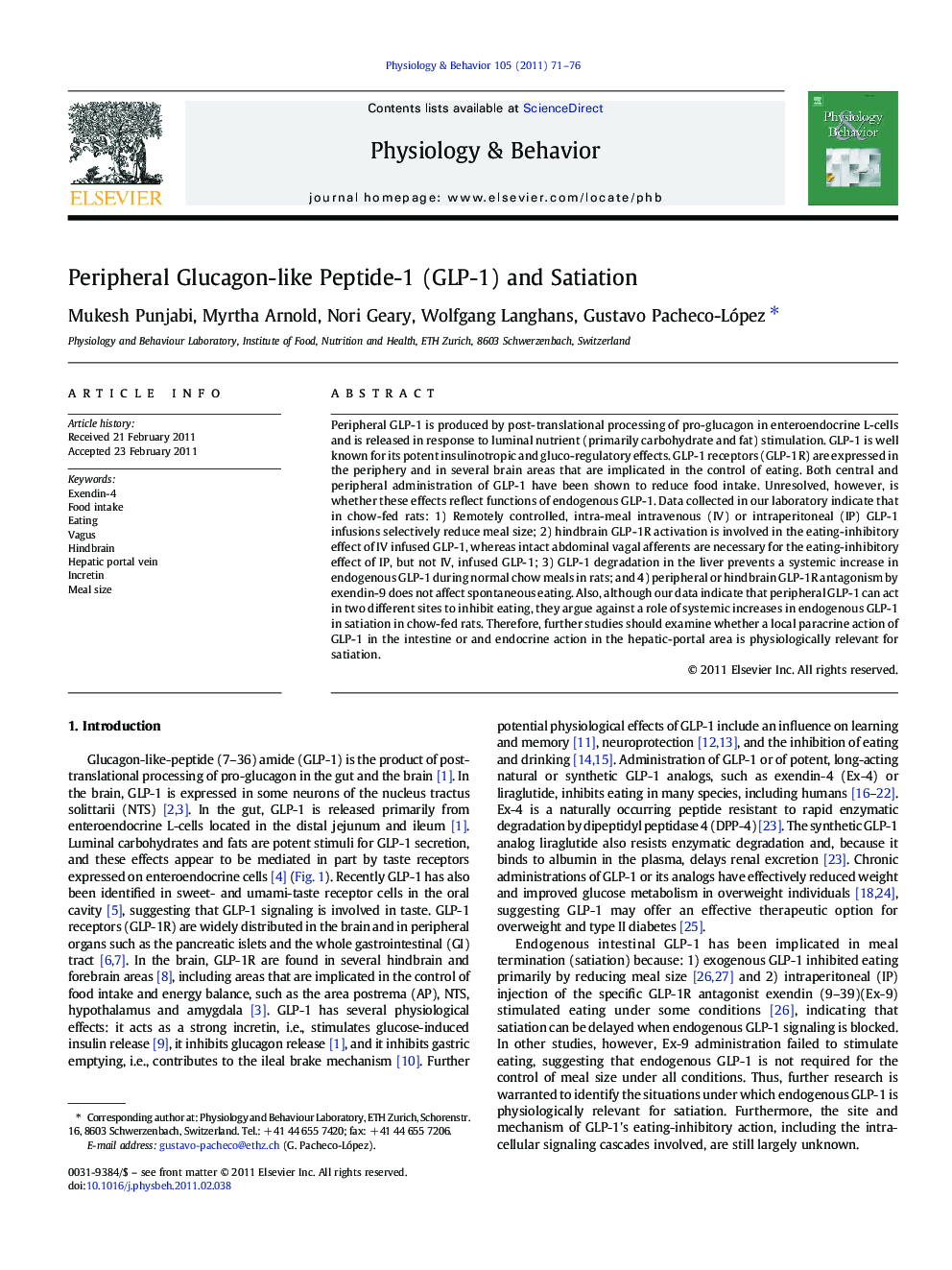| Article ID | Journal | Published Year | Pages | File Type |
|---|---|---|---|---|
| 2844671 | Physiology & Behavior | 2011 | 6 Pages |
Peripheral GLP-1 is produced by post-translational processing of pro-glucagon in enteroendocrine L-cells and is released in response to luminal nutrient (primarily carbohydrate and fat) stimulation. GLP-1 is well known for its potent insulinotropic and gluco-regulatory effects. GLP-1 receptors (GLP-1R) are expressed in the periphery and in several brain areas that are implicated in the control of eating. Both central and peripheral administration of GLP-1 have been shown to reduce food intake. Unresolved, however, is whether these effects reflect functions of endogenous GLP-1. Data collected in our laboratory indicate that in chow-fed rats: 1) Remotely controlled, intra-meal intravenous (IV) or intraperitoneal (IP) GLP-1 infusions selectively reduce meal size; 2) hindbrain GLP-1R activation is involved in the eating-inhibitory effect of IV infused GLP-1, whereas intact abdominal vagal afferents are necessary for the eating-inhibitory effect of IP, but not IV, infused GLP-1; 3) GLP-1 degradation in the liver prevents a systemic increase in endogenous GLP-1 during normal chow meals in rats; and 4) peripheral or hindbrain GLP-1R antagonism by exendin-9 does not affect spontaneous eating. Also, although our data indicate that peripheral GLP-1 can act in two different sites to inhibit eating, they argue against a role of systemic increases in endogenous GLP-1 in satiation in chow-fed rats. Therefore, further studies should examine whether a local paracrine action of GLP-1 in the intestine or and endocrine action in the hepatic-portal area is physiologically relevant for satiation.
Research Highlights► Peripheral GLP-1 can act in two different sites to inhibit eating. ► Hindbrain GLP-1 receptors mediate the inhibition of eating by circulating GLP-1. ► GLP-1 degradation prevents a systemic rise in endogenous GLP-1 during chow meals. ► Endogenous GLP-1 presumably inhibits eating by a paracrine effect on vagal afferents.
